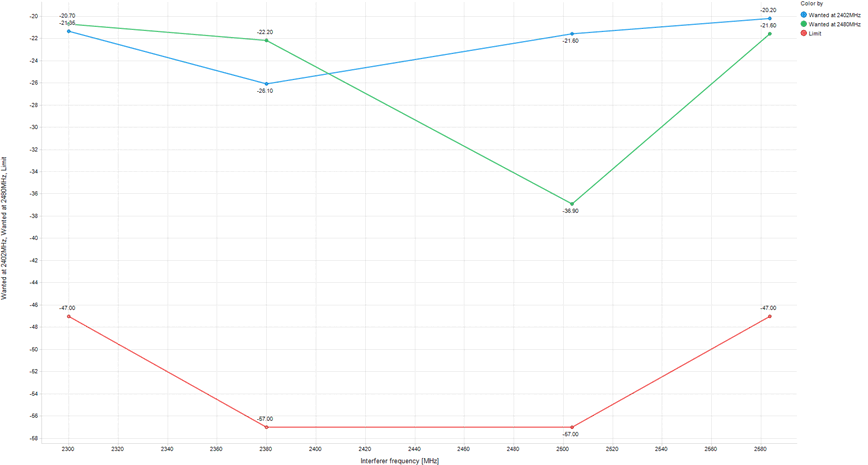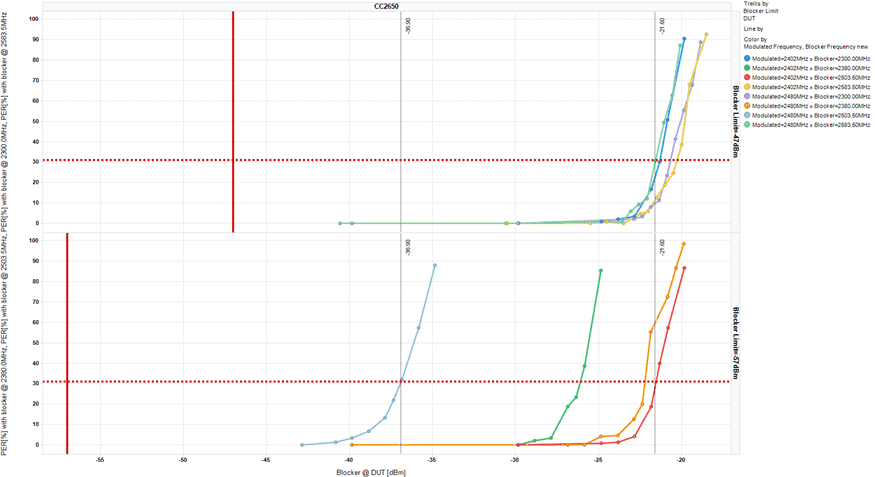SWRA536 February 2016 CC2520 , CC2520 , CC2530 , CC2530 , CC2530-RF4CE , CC2530-RF4CE , CC2533 , CC2533 , CC2540 , CC2540 , CC2541 , CC2541 , CC2640 , CC2640 , CC2640R2F , CC2640R2F , CC2640R2F-Q1 , CC2640R2F-Q1 , CC2640R2L , CC2640R2L , CC2650 , CC2650 , CC2650MODA , CC2650MODA
4.4 BLE PER vs Blocking Requirement (ETSI EN 300 328 V2.1.1)
Test steps:
- Wanted signal level is set 6 dB above the sensitivity level for the selected operating frequency (2402 MHz and 2480 MHz) according to the result from Section 4.2 and Section 4.3.
- Apply a TX CW interferer at 2300.0 MHz to the DUT with increasing power level until PER goes above the specified 30.8% level for BLE.
- Repeat step 2 for 2380.0 MHz, 2503.5 MHz and 2583.5 MHz
As can be seen in Table 5, Figure 12 and Figure 13, the CC2650 are well inside the requirements specified in ETSI EN 300 328 V2.1.1 when using Bluetooth low energy.
 Figure 12. RX Blocking Measurement Results
Figure 12. RX Blocking Measurement Results Table 5. Brief Table
| Interferer Frequency [MHz] | Limit [dBm] | Wanted at 2402 MHz [dBm] | Wanted at 2480 MHz [dBm] |
|---|---|---|---|
| 2300.00 | -47 | -21.35 | -20.70 |
| 2380.00 | -57 | -26.10 | -22.20 |
| 2503.50 | -57 | -21.60 | -36.90 |
| 2583.50 | -47 | -20.20 | -21.60 |
 Figure 13. Detailed Plot
Figure 13. Detailed Plot